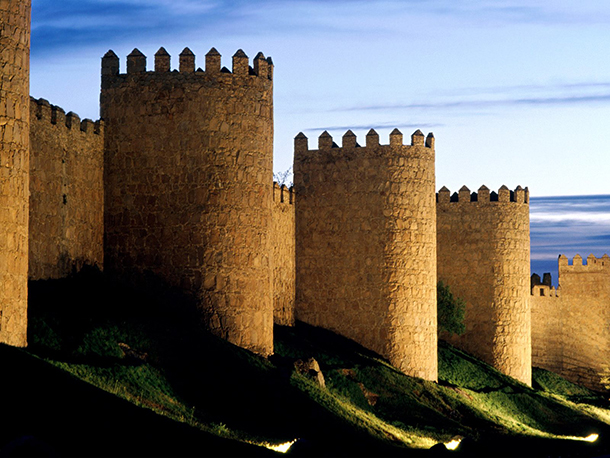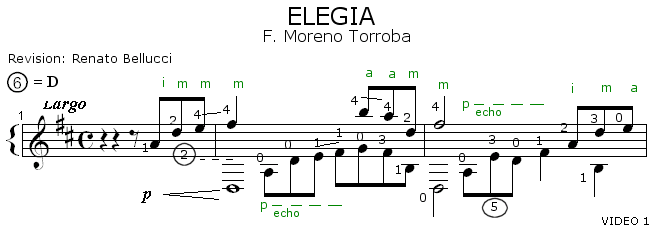
Torroba Federico Moreno, "Elegia" (TAB)
Transcription and Fingering: Renato Bellucci
Federico Moreno Torroba
I find Torroba to be one of Spain's greatest composer. His writing is intelligent and passionately Spanish in character. Torroba introduces contemporary harmonies "in the right measure".
Neil Armstrong was setting foot on the moon in 1969. Andrés Segovia was recording Torroba's suite Castles of Spain for Decca. Below is a picture of Elegia, the castle that crowns Torija, a small town in central Spain. This is what the castle looked like when Torroba wrote the piece. You can hear the wind blowing between the ruins in the echoing opening melodies.

Torroba's
written notes differ quite substantially from Segovia's 1969 recording.
For example, Segovia changed a G# to G in measures 8 and 24 (Fragment
below). That was a normal practice since most composers were writing for
a new classical instrument and, Andres Segovia was the highest
authority. Moreover, Segovia had an Internationally established
reputation, while composers like Torroba, Ponce and Vila Lobos were
being put on the map thanks to the Spanish master. It is therefore clear
that they would not mind the changes (In The godfather words, Segovia
"made them an offer they could not refuse"). A complete repetition of
measures 9 through 24 is also omitted.
Renato Bellucci Plays "Elegia"
Add to playlist
Staff and Video 1
The beginning is sweet and the contrasting echo should sound as if far away. Sustain the F# in measure 3. All the "glissandos (slides) in Elegia are important because they help deliver the sweetness and nostalgic character of the work. Use the open strings to "gain some extra time" and move to the new position on the fingerboard. This is the case with the A-D bass sequence at the beginning of measure 2. A slight separation with the bass will also give you some extra time in the change of position like in the case with the low D and the F# at the beginning of measure 3. The orange arrow shows the workings of finger 4 that leads the melody in staff 1.
Video 1
Revision: Santa Monica, CA, January 15, 2013
Revision: Asunción, March 12, 2013
The continuation of this masterclass is in the members area, become a member today.
 Back to Top
Back to Top


